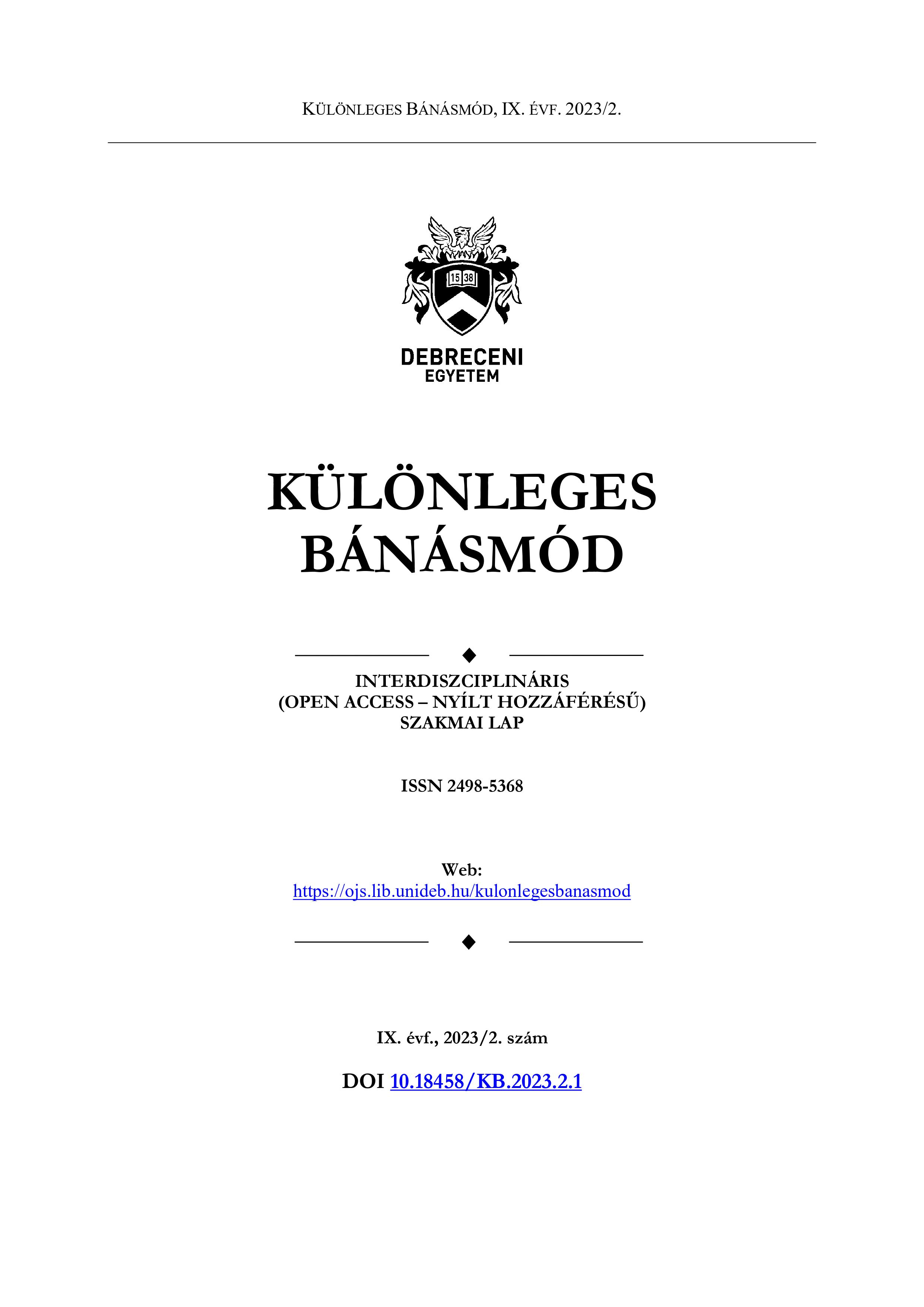COMPARATIVE ANALYSIS OF DISABILITY ATTITUDE FORMATION PROGRAMS THAT CAN BE USED IN PUBLIC EDUCATION
Author
View
Keywords
License
Copyright (c) 2023 Tóth-Szerecz Ágnes

This work is licensed under a Creative Commons Attribution-NonCommercial-NoDerivatives 4.0 International License.
How To Cite
Abstract
Social sensitization created in an organized form can be an extremely powerful tool for society to become more accepting of different disabilities, and all of these can also support the more effective social integration of people with disabilities. Rejection or distancing can mostly be the result of a lack of information, so if society gets more insight and information about all this, a higher degree of acceptance can be assumed. In recent decades, the number of programs and events that set this goal has increased spectacularly. Based on the conclusions of international attitude surveys, it can be formulated as an essential variable the quality and quantity of information the respondent has about the given group, whether there is a person with a disability in his microenvironment, whether he has already established an interaction with them, and also the impulses received from the immediate environment, the family values can be an influencing factor. The foreign research on the subject also points out that attitude formation started at an early age can be really effective, and that the impulses received in institutional education can largely determine the attitude of students towards their peers with disabilities. After summarizing the international and domestic attitude research, an analysis of sensitization programs available in Hungary within the framework of institutional education, which may be suitable for shaping attitudes towards disability, was carried out with the help of a system of criteria compiled along these lines. The aspects of the analysis include how many types of disabilities are included, which age group the program is suitable for, with what intensity and how many times participation is possible, the nature of the knowledge transfer, and whether it is possible to come into contact with a disabled person, thus giving the opportunity to gather personal experience. The aim of the analysis is to compare the available programs with the results of foreign attitude surveys to identify the most optimal and widely applicable sensitization programs.


 https://doi.org/10.18458/KB.2023.2.65
https://doi.org/10.18458/KB.2023.2.65